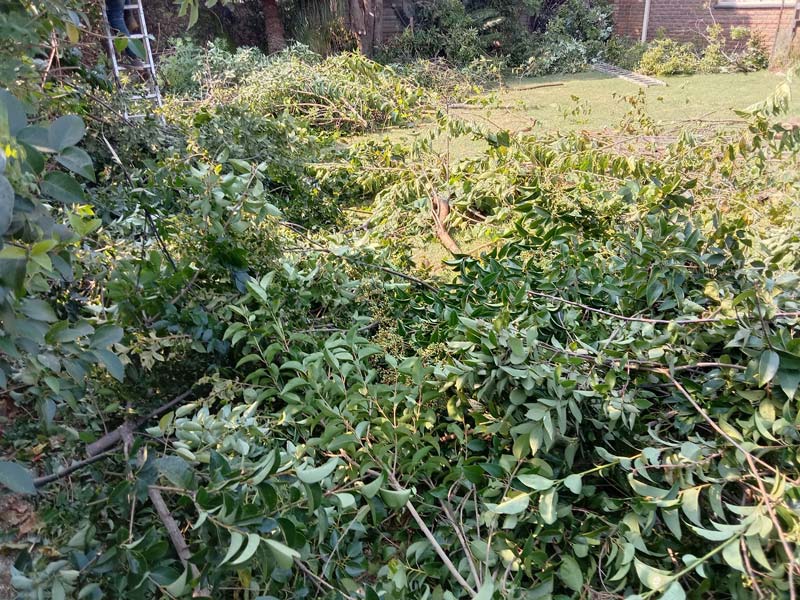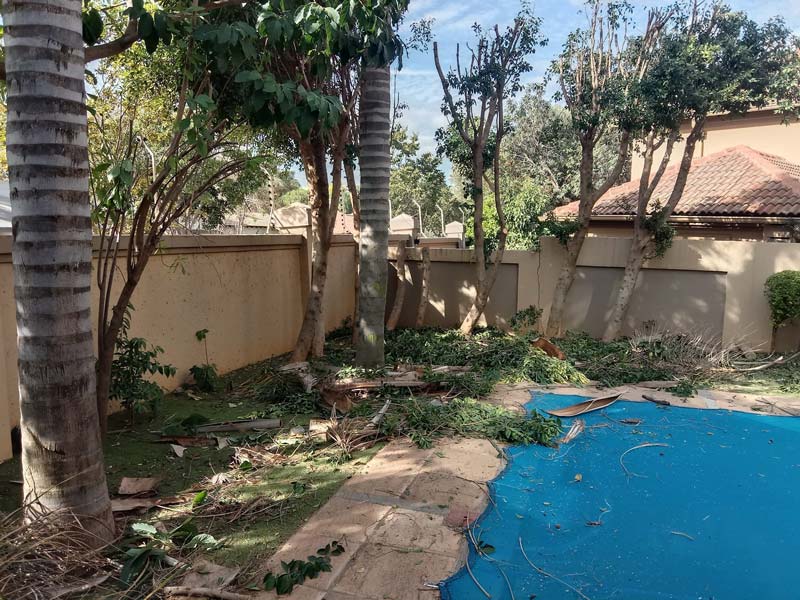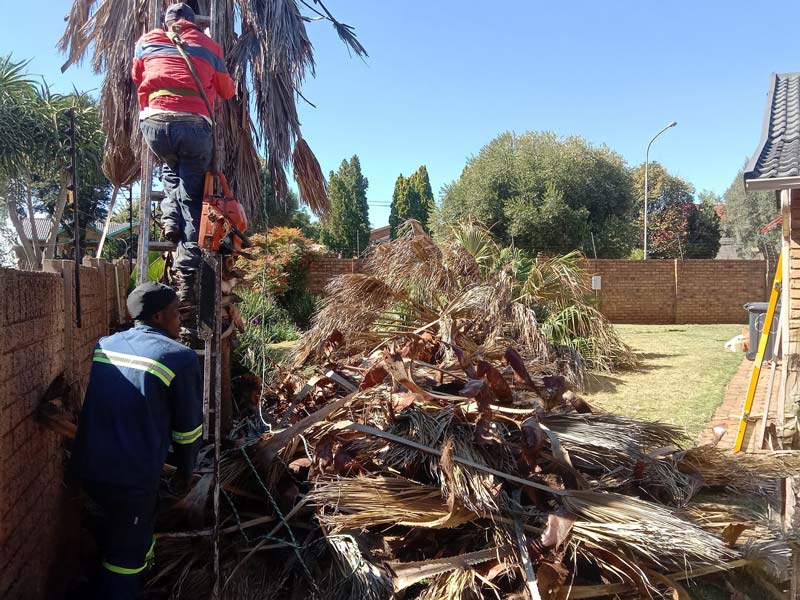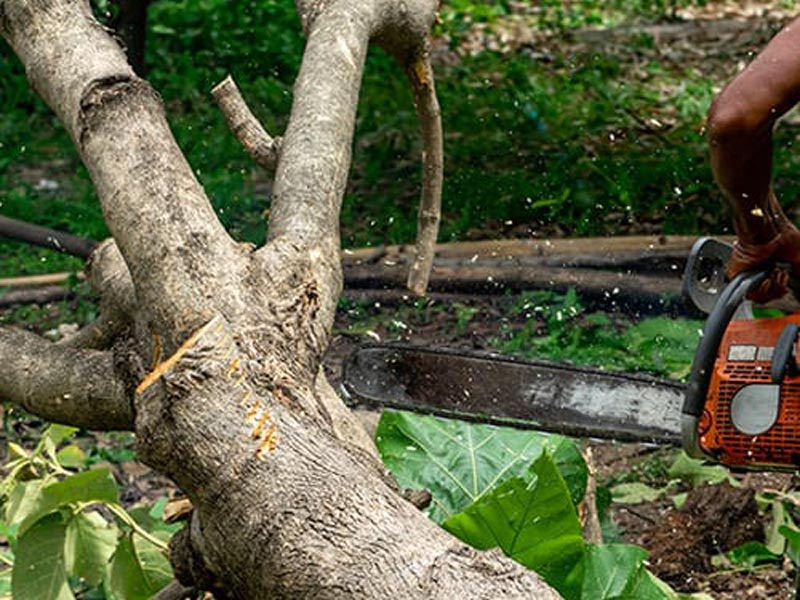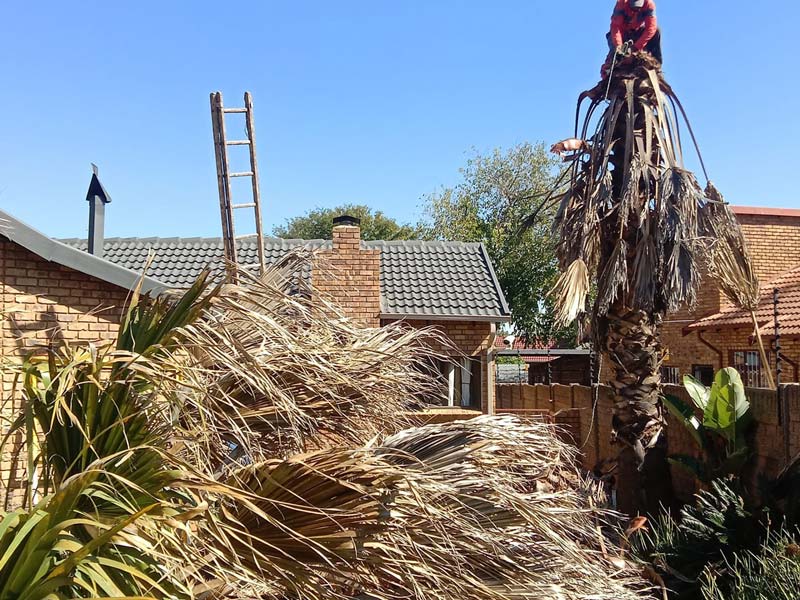In Pretoria East, a permit is required for tree removal due to local regulations aimed at protecting natural heritage. This process helps guarantee adherence to the National Forests Act of 1998 and municipal bylaws. The application involves submitting necessary documentation and may require a site inspection. Non-compliance can lead to significant legal repercussions, including fines. To comprehend the specific requirements and benefits of compliance, further details are available.
Understanding Tree Removal Regulations in Pretoria East
When considering tree removal in Pretoria East, it is essential to navigate the local regulations that govern such actions.
Understanding tree species identification is important in this situation, particularly as the National Forests Act of 1998 protects specific indigenous species. Moreover, municipal bylaws may impose further restrictions, particularly on public or protected land. Local urban forestry initiatives strive to conserve these significant trees, underscoring the need for property owners to be well-informed. Additionally, it’s important to remember that tree removal permits are necessary to protect natural heritage and can vary across municipalities. In many cases, controlled techniques will be required for safe removal, which is critical for compliance with regulations. Failure to comply with these regulations can result in fines or penalties, making it imperative to seek professional advice to navigate the permitting process effectively.
The Application Process for Tree Removal Permits
The application process for tree removal permits in Pretoria East requires careful preparation and adherence to local regulations.
Applicants must compile necessary documentation, including a completed permit application form, site plans, and photographs of the tree in question, alongside payment of required fees.
Following submission, applications undergo a review and site inspection to evaluate the tree’s condition and potential impact, ensuring compliance with municipal codes and environmental considerations.
Required Application Documentation
Comprehending the requirements for obtaining a tree removal permit is vital for property owners in Pretoria East. First, they must complete the official application form provided by the municipality, including detailed property owner information. Supporting documentation is imperative; this includes arborist reports showcasing tree health, photographs of the trees, and site plans that position the trees relative to nearby structures. Moreover, if the tree is in a protected area, environmental impact statements may be necessary. Additionally, removal of Tier 1, Tier 2, Tier 3, or Tier 4 trees typically requires a review and approval before any work can proceed.
Review and Site Inspection
Moving from the application documentation requirements, the next phase in securing a tree removal permit involves a thorough review and site inspection process. This stage guarantees compliance with local regulations, while engaging key stakeholders.
- Initial review by planning departments
- Coordination with various city departments
- Scheduling of site inspections for access
- Assessment based on specified inspection criteria
Each step prioritises the health of the urban environment, ensuring tree removal aligns with community standards.
Application Fees Overview
Comprehending the application fees associated with tree removal permits is vital for those planning to undertake such projects.
These fees vary based on factors like zoning, tree quantity, and canopy size. For instance, a base inspection fee applies for up to 20 trees, while larger projects can incur markedly higher fees.
Furthermore, non-refundable application fees must be paid upfront to initiate processing. After-the-fact applications are subject to double fees.
It is important for applicants to verify any potential fee exemptions under local tree protection ordinances, ensuring awareness of the financial implications before proceeding with their tree removal plans.
Replacement and Mitigation Requirements After Tree Removal
When a tree is removed, various replacement and mitigation requirements often come into play to confirm ecological balance is maintained.
These regulations are designed to promote the long-term health of urban forestry in Pretoria East.
- Replacement species must be approved natives.
- Mitigation fees may be required, funding community tree initiatives.
- Replacement trees should be planted within 30 to 90 days post-removal.
- Compliance inspections verify adherence to planting and fee obligations.
Adhering to these guidelines nurtures a stronger community connection to the environment, while actively contributing to the restoration of local ecosystems.
Exceptions and Exemptions for Tree Removal Permits
Exceptions and exemptions for tree removal permits in Pretoria East can greatly facilitate the process for property owners.
Certain trees may be exempt based on their diameter size, allowing for easier removal without extensive paperwork, while invasive species guidelines encourage the removal of problematic trees without a permit.
Furthermore, emergency removal regulations enable property owners to act swiftly when trees pose immediate threats to safety or property, further simplifying compliance with local regulations. Additionally, emergency tree felling services provide professional assistance in urgent situations, ensuring safe and efficient removals.
Diameter Size Exemptions
Tree removal permits often hinge on specific criteria, including the diameter at breast height (DBH) of the trees in question. In many cases, trees below certain DBH thresholds are exempt from permit requirements, allowing property owners greater flexibility. Key points to consider include:
- Minimum diameter thresholds typically range from 6 inches to 12 inches DBH.
- Exempt trees are often deemed too small to significantly impact local ecosystems.
- Different species may have varied DBH requirements based on growth characteristics.
- Verification through arborist reports may be necessary to ensure compliance.
Understanding these exemptions empowers homeowners in tree management decisions.
Invasive Species Guidelines
Grasping invasive species guidelines is essential for property owners navigating tree removal regulations. These guidelines help ensure effective invasive species management, minimising ecological impact. Category 1 invasive species require mandatory removal without permits, while Categories 2 and 3 allow for conditional management.
| Category | Permit Requirement | Examples |
|---|---|---|
| Category 1 | No permits; mandatory removal | Long-leafed wattle, bugweed |
| Category 2 | Conditional; permits may be needed | Black wattle, patula pine |
| Category 3 | Conditional; some retention allowed | Sisal, ornamental species |
Understanding these regulations fosters responsible tree management and promotes community and environmental health.
Emergency Removal Regulations
When faced with a hazardous situation involving a tree, property owners often wonder what regulations apply to emergency removals. Comprehending these regulations can help ensure compliance while swiftly addressing the threat.
Here are key considerations:
- Emergency tree removals may not require a permit if there’s immediate danger to life or property.
- Proof of hazardous conditions, such as decay or instability, is often necessary.
- Notification to local authorities is typically required post-removal.
- Certain invasive or non-protected species may qualify for exemption during emergencies.
Adhering to these guidelines helps maintain safety and legal standards in Pretoria East.
Penalties and Enforcement for Unauthorised Tree Removal
Unauthorized tree removal can result in significant legal consequences, often arising from the need to preserve urban forestry and biodiversity.
Penalties for such actions include monetary fines that vary based on the size and number of trees removed, reinforcing the principle of penalty enforcement within municipal bylaws. Offenders may also be held responsible for mandatory tree replacement, ensuring minimal urban impact. Additionally, engaging professional services such as tree felling services can help ensure compliance with local regulations.
Municipal environmental departments oversee enforcement, managing inspections and responding to complaints. Consequently, these measures encourage compliance with tree preservation standards, promoting community accountability and supporting sustainable urban development for all residents in Pretoria East.
Importance of Urban Forest Preservation
Urban forest preservation plays a critical role in enhancing the ecological balance within metropolitan areas.
The urban ecosystem benefits greatly from healthy tree cover, offering various advantages to communities:
- Improved air quality through pollutant filtration and oxygen production.
- Temperature moderation via shade and evapotranspiration, mitigating the heat island effect.
- Support for biodiversity by providing habitats for various species.
- Stormwater management that reduces flooding and improves water quality.
Resources and Contacts for Tree Removal Inquiries in Pretoria East
Maneuvering the process of tree removal can be complex, particularly when it involves obtaining the necessary permits.
Residents in Pretoria East can reach out to the Tshwane Metropolitan Municipality‘s Environment and Agriculture Department for guidance on tree removal applications. Local ward councillors are also significant contacts, providing insights into the permit process and related departments.
For expert consultations, certified arborists and environmental consultants can assist with assessments and reports necessary for permit approval. Engaging in community outreach initiatives can further improve understanding of tree protection laws. Utilising these resources cultivates a sense of belonging and guarantees compliance with local regulations. Additionally, understanding the importance of comprehensive tree services can ensure that the removal process is conducted safely and effectively.


